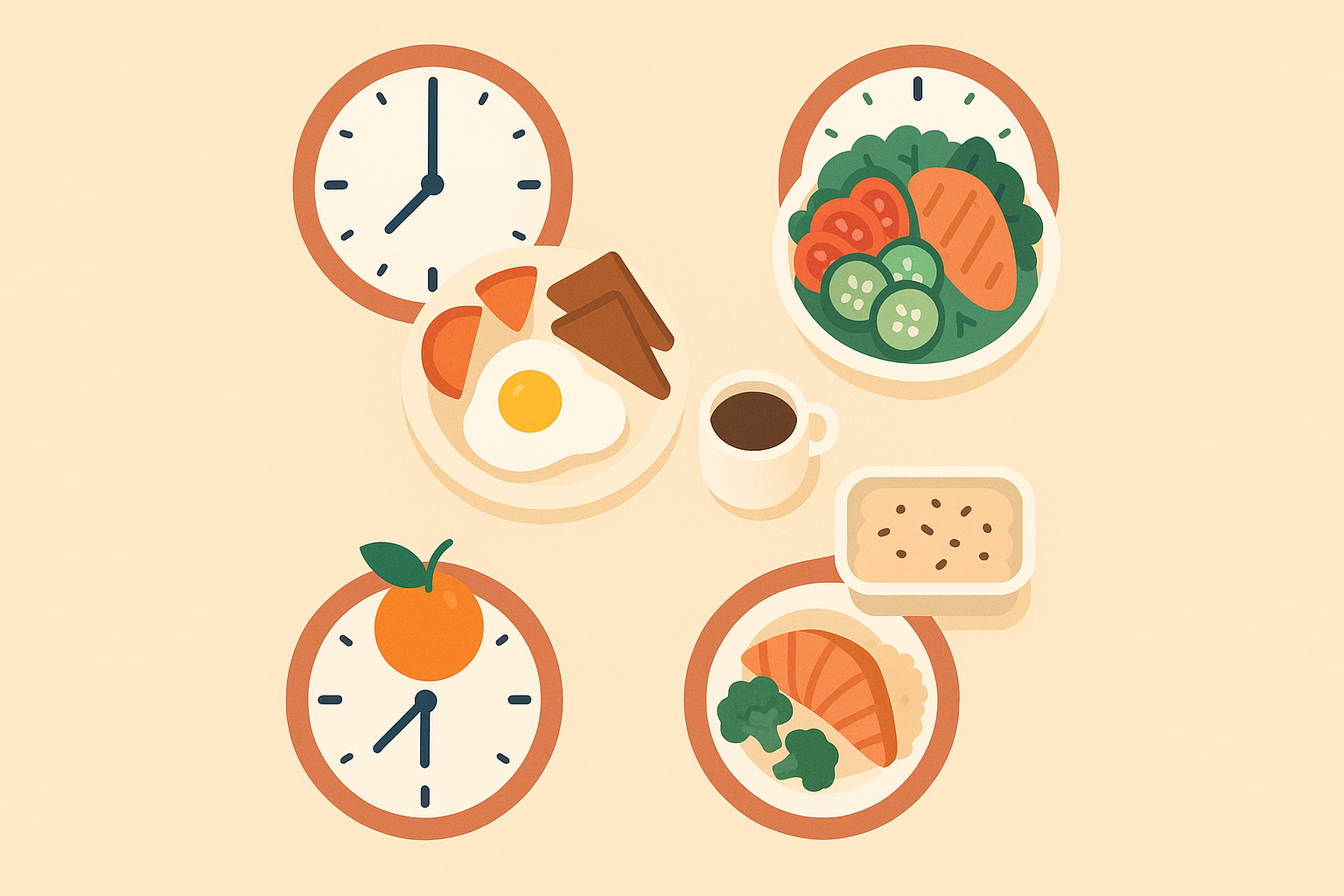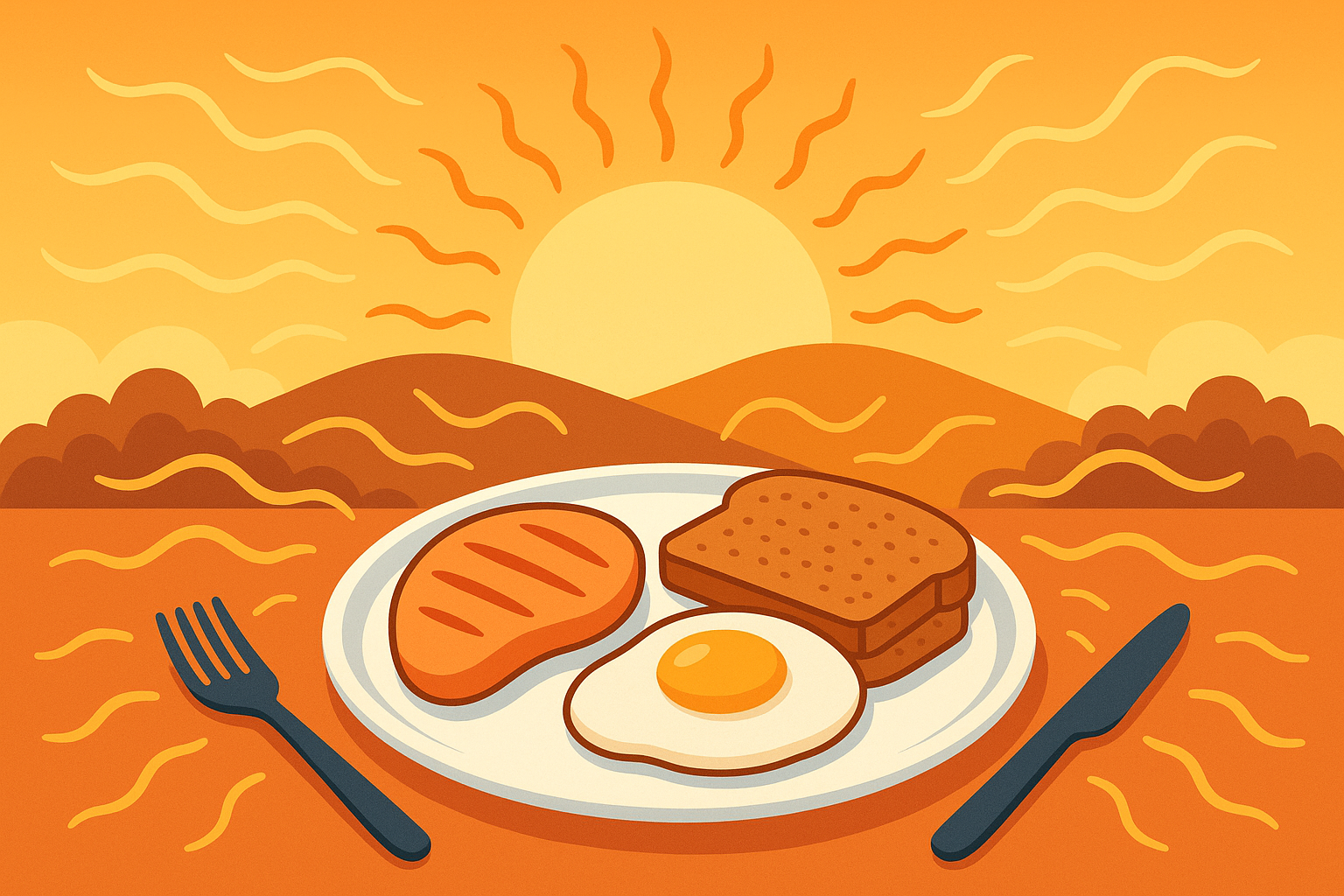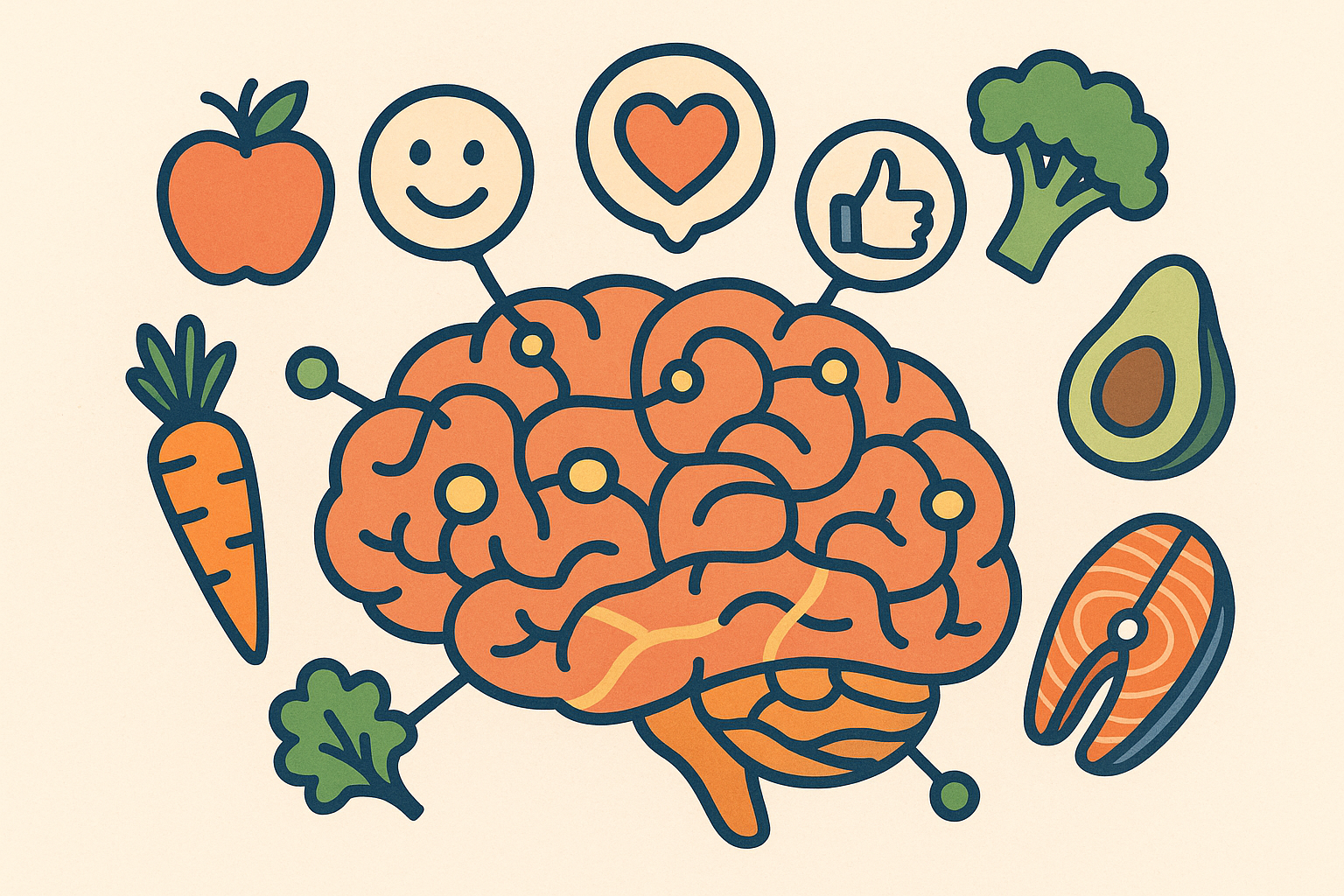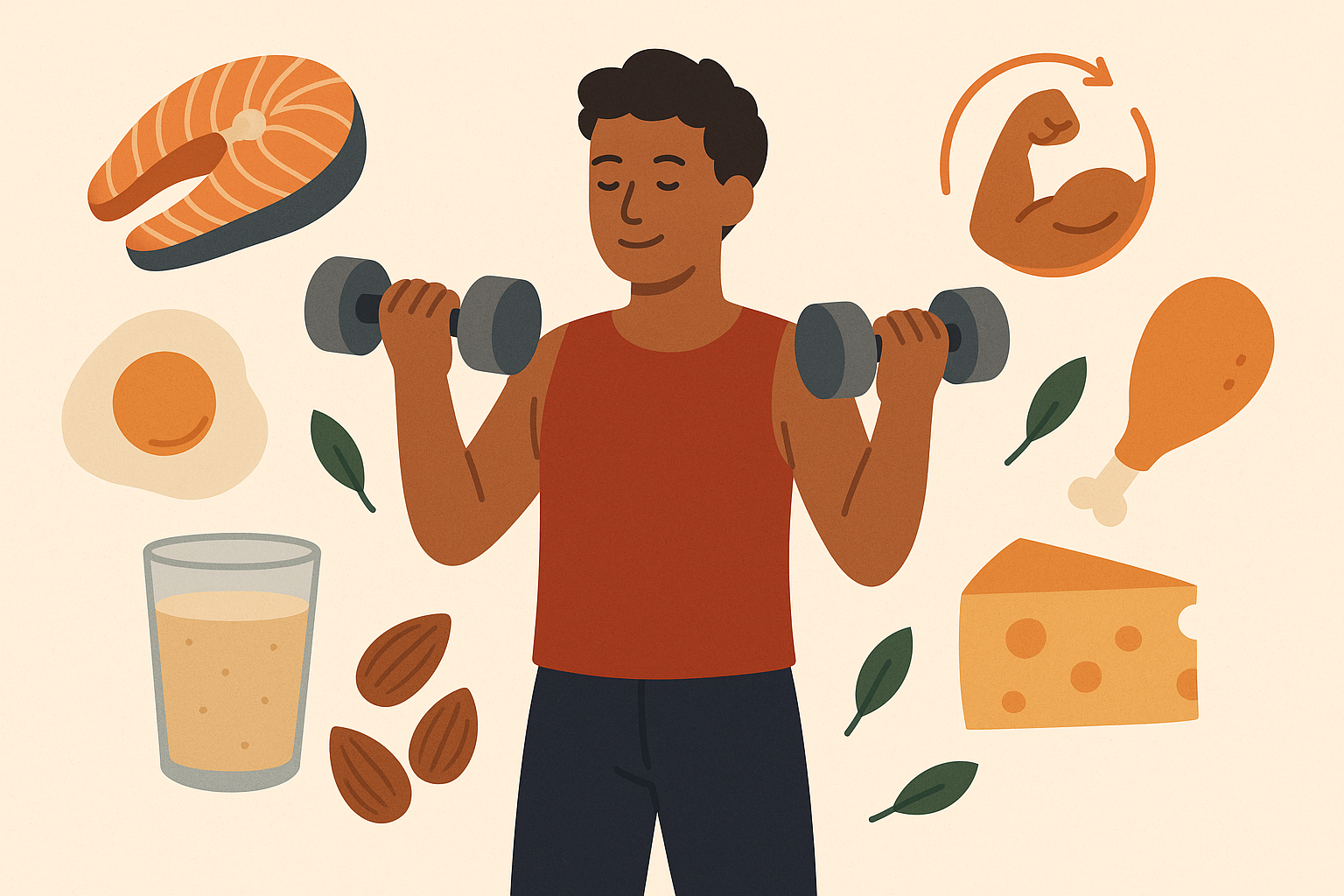
Three years ago, I was standing in my kitchen at 2 AM, staring into the fridge after another failed diet attempt. I’d tried everything – keto, paleo, intermittent fasting – but nothing stuck. That’s when I discovered something that changed everything: it wasn’t just about what I was eating, but when I was eating it.
Most adults need around 2,000 calories daily just to keep their bodies running, which makes the 900-calorie approach a very low-calorie diet that needs careful planning and medical oversight. But here’s what I’ve learned after years of trial and error – aligning your meal timing with your body’s natural rhythms can completely transform your results.
You’ll discover why timing matters more than you think and how to transition safely into and out of restrictive eating phases without your metabolism throwing a tantrum. This guide reveals the strategies that actually work when you’re dealing with severe calorie restriction – because let’s be honest, most advice out there is pretty useless when you’re this hungry.

Table of Contents
- Working With Your Body’s Natural Schedule
- Building Mental Toughness That Actually Works
- Smart Transitions: Getting In and Out Without Wrecking Your Metabolism
- The 1000-Calorie Safety Net: When Less Restriction Works Better
- Final Thoughts
TL;DR
- Your body’s hormone cycles determine when calories work best – morning is your golden window
- Every single bite needs to pack maximum nutrition at 900 calories
- Smart psychology prevents the restrict-binge cycle that kills most diets
- Gradual transitions protect your metabolism from long-term damage
- The 1000-calorie approach offers similar benefits with better staying power
- Your environment and social game matter as much as the food itself
Working With Your Body’s Natural Schedule
Ever notice how you can eat the same meal but feel totally different depending on the time of day? That’s your hormones talking. Your metabolism, energy levels, and hunger all follow predictable daily patterns that most 900 calorie meal plan approaches completely ignore.
Here’s the thing – when you eat matters just as much as what you eat. I learned this the hard way after months of fighting my body’s natural timing and wondering why I felt like garbage even when I was eating “perfectly.”
Making Your Hormones Work For You Instead of Against You
Your body produces different hormones at specific times throughout the day, creating natural windows where certain nutrients get processed more effectively. Think of it like catching a wave – you can either ride it or get pummeled by it.
When designing your daily eating schedule, understanding how intermittent fasting works for women can provide additional insights into hormone-friendly meal timing that works with your 900 calorie meal plan approach.
Riding the Morning Energy Wave
Between 6-9 AM, your cortisol levels naturally spike to wake you up and give you energy. This creates the perfect opportunity to eat about 40% of your daily calories when your body is actually primed to use them efficiently.

Research shows that very low-calorie diets (VLCDs) like the 900-calorie plan fall under medical supervision protocols, which makes timing your biggest meal during peak cortisol hours even more important when you’re working with restricted calories.
My friend Lisa was always exhausted by 10 AM, even after her morning coffee. She thought she just wasn’t a morning person. Turns out, she was eating a tiny breakfast and saving most of her calories for dinner. Once she flipped that around and started eating 360 calories (40% of her 900-calorie plan) for breakfast – think 2 scrambled egg whites with spinach, 1/2 cup oatmeal with berries, and a small Greek yogurt – everything changed. No more mid-morning crashes.
Your Secret Weapon: Morning Carb Tolerance
Your body’s ability to handle carbohydrates changes dramatically throughout the day. Morning and post-workout periods are when your insulin sensitivity is at its peak, meaning carbs are more likely to fuel your muscles rather than get stored as fat.
Here’s what works: eat all your daily carbs (60-80g) before 2 PM and keep evening meals focused on protein and healthy fats. For those wanting to dial in their carbohydrate timing even more, learning how to find your carb tolerance can help optimize this part of your restricted calorie approach.
Evening Recovery Mode
Think of your metabolism like a campfire. In the morning, it’s ready to burn hot and bright. By evening, it’s winding down to glowing embers. You wouldn’t throw a huge log on dying embers and expect it to burn well, right? Same goes for your dinner.
As the day winds down, your body shifts into recovery mode. Eating your final meal 3-4 hours before bed and including some tryptophan-rich proteins helps support natural melatonin production while preventing those late-night hunger pangs that make you question all your life choices.
Making Every Bite Count
At 900 calories, there’s literally no room for junk. Every single bite needs to deliver maximum nutritional value, or you’ll end up feeling like garbage and probably quit within a week (been there, done that).
Here are my go-to foods that pack the biggest nutritional punch – and trust me, I learned this the hard way after a week of eating nothing but rice cakes and feeling like I’d been hit by a truck:
| Nutrient-Dense Food | Calories per 100g | Key Nutrients | Best Timing Window |
|---|---|---|---|
| Spinach | 23 | Iron, Folate, Vitamin K | Any meal – seriously, put it in everything |
| Salmon | 208 | Omega-3, Protein, B12 | Lunch/Dinner |
| Greek Yogurt (0% fat) | 59 | Protein, Probiotics, Calcium | Breakfast/Snack |
| Broccoli | 34 | Vitamin C, Fiber, Folate | Lunch/Dinner |
| Eggs | 155 | Complete Protein, Choline | Breakfast – your morning MVPs |
| Sweet Potato | 86 | Beta-carotene, Fiber | Pre-2 PM only |
The Organ Meat Hack (Yes, Really)
I know, I know – organ meats sound gross. But hear me out. Just 1-2 ounces of liver weekly can address common deficiencies in B12, iron, and CoQ10 that often happen during calorie restriction. The key is starting small and hiding them in familiar dishes until your taste buds adapt.
I mix ground liver into meatballs or chili where the flavor gets completely masked. You won’t even know it’s there, but your body will thank you for the micronutrient boost.
Your Gut Health Insurance Policy
Calorie restriction can mess with your digestive system, which is why fermented foods become non-negotiable. These foods provide beneficial probiotics while helping your body absorb nutrients better from everything else you eat.
I aim for 2-3 ounces of fermented vegetables daily – think sauerkraut, kimchi, or pickled vegetables. It helps prevent the bloating and discomfort that can come with restrictive eating. Supporting your digestive system becomes even more critical on restricted calories, which is why exploring drinking vinegars for gut health can provide additional digestive support during your meal plan journey.

Training Your Body to Burn Fat Like a Boss
The real goal isn’t just losing weight – it’s teaching your body to efficiently switch between burning glucose and fat for fuel. This metabolic flexibility is like having a hybrid car engine that can run on different fuel sources depending on what’s available.
The 5-2 Fat Burning Protocol
Here’s what I’ve found works: 5 days of higher fat intake (70-80% of calories) alternated with 2 days of moderate carbohydrates. This trains your body to be a fat-burning machine while preventing the complete carb restriction that can make you feel like a zombie.
My buddy Mark does this by eating 630 calories from fats (avocado, olive oil, nuts) and 270 calories from protein Monday through Friday, then shifts to 360 calories from complex carbs, 450 calories from protein, and 90 calories from healthy fats on weekends. This cycling approach helped him lose 2 pounds per week consistently without feeling like he was dying.
Building Mental Toughness That Actually Works
Let’s be real – the first week sucks. You’ll be hungry, cranky, and questioning every life choice. I remember day three, standing in line at Starbucks, seriously considering whether a venti caramel macchiato was worth throwing away two days of progress. (Spoiler alert: it wasn’t, but I totally understood the temptation.)
The mental challenges of a 900-calorie plan need more than willpower – they need smart strategies based on how your brain actually works. This isn’t about being “strong enough” – it’s about being smart enough to work with your brain’s natural tendencies instead of fighting them.

Rewiring Your Food Relationships
Your brain is basically a toddler when it comes to food – it wants what it wants, and it wants it NOW. Instead of fighting this (spoiler: you’ll lose), work with it.
Your brain forms powerful associations between food and reward that can sabotage even the best meal plans. The goal is creating new patterns that support your goals rather than constantly battling deeply ingrained habits.
Finding Satisfaction Without Going Overboard
Rather than eliminating all food pleasure, I’ve learned to schedule small rewards at consistent times while pairing meals with positive non-food activities. This satisfies your brain’s need for reward while gradually shifting the focus away from food as the only source of pleasure.
The key is consistency. I pair my afternoon meal with my favorite podcast or eat breakfast while reading something inspiring. These small additions make meals feel rewarding without relying solely on taste. It’s like training your brain to get excited about the whole experience, not just the food.
Decision Fatigue is Real
Every food decision throughout the day drains your mental energy, making it harder to stick to your plan when willpower is running low. Creating systematic meal planning and prep routines eliminates hundreds of micro-decisions that can derail your progress.
Look, meal prep sounds great in theory, but if you’re like me and Sunday rolls around and you’d rather watch Netflix than chop vegetables, start smaller. Just prep your proteins. Or even just wash your vegetables. Something is better than nothing.
My Realistic Weekly Prep Checklist:
- ☐ Plan meals for the week (doesn’t have to be fancy)
- ☐ Make a grocery list organized by store sections
- ☐ Cook proteins in bulk (3-4 days worth)
- ☐ Wash and portion vegetables (game changer)
- ☐ Pre-measure snacks into containers
- ☐ Prep a few emergency backup meals
- ☐ Set meal reminders on your phone
Designing Your Environment for Success
Your surroundings have more influence on your eating behaviors than you might realize. Small changes to your environment provide constant, subtle support without requiring conscious effort.
Recent research published in The Lancet shows that “NHS Type 2 Diabetes Path to Remission Programme” participants who completed a year-long low-calorie meal replacement program achieved a 32% remission rate, demonstrating how structured environmental support can create lasting behavioral changes even with severe caloric restriction.
Handling Social Food Situations
Social eating situations don’t have to derail your progress if you prepare properly. Can we talk about this for a second? Someone’s always going to have an opinion about what you’re eating. I’ve learned that “I’m focusing on my health right now” shuts down most food pushers without getting into the details of your calorie count.
When someone offers you food, try saying “Thanks for thinking of me! I’m following a specific eating plan right now, but I’d love to catch up over coffee instead.” Having alternative suggestions ready for social activities that don’t revolve around eating is a lifesaver.
Environmental Cue Redesign
Your environment is full of subtle triggers that influence eating behaviors without your conscious awareness. I did a “food cue audit” of my living and work spaces and was shocked at what I found.
Simple changes work wonders. Remove visible high-calorie foods from counters and place healthy options in prominent locations. This dramatically reduces temptation without requiring constant willpower. It’s like setting yourself up to make good choices on autopilot.
<img src=”https://staging 
Smart Transitions: Getting In and Out Without Wrecking Your Metabolism
Here’s what nobody tells you about restrictive eating: the transition phases are where most plans succeed or fail, yet they’re often completely ignored. Jumping straight into severe restriction is like going from couch to marathon – you’re setting yourself up for disaster.
I’ve messed this up more times than I can count. There was the time I tried to go from eating 2,500 calories to 900 overnight and nearly passed out during a work meeting on day two. Learn from my mistakes.
Preparing Your Body for Success
Your metabolism needs time to adapt to significant calorie reductions. A gradual step-down approach over 2-3 weeks allows your body to adjust while helping you figure out your personal hunger and energy patterns.
This preparation phase also gives you time to establish the habits and routines that will support you during the more challenging restrictive period. Trust me, you don’t want to be figuring this stuff out when you’re already hangry.
The Step-Down Strategy That Actually Works
Rather than cutting calories drastically overnight, I reduce intake by 200 calories each week until reaching the target 900. This gradual approach minimizes the shock to your system while allowing you to troubleshoot problems before they become major obstacles.
| Week | Daily Calories | Focus Area | Key Adjustments |
|---|---|---|---|
| Pre-Week | Current intake | Assessment | Track what you normally eat |
| Week 1 | Current – 200 | Portion Control | Reduce serving sizes by 25% |
| Week 2 | Current – 400 | Meal Timing | Get into a 3-meal rhythm |
| Week 3 | Current – 600 | Fine-tuning | Focus on nutrient-dense choices |
| Week 4 | 900 | Full Implementation | You’re ready for the real deal |
Protecting Your Muscle Mass
Losing muscle during calorie restriction isn’t inevitable if you prepare properly. Starting some form of resistance training 2-3 weeks before beginning your 900-calorie phase, combined with smart protein timing, helps maintain lean body mass.
Getting baseline body composition measurements gives you objective data to track progress beyond just the scale. Studies show that sample 900-calorie meal plans typically provide 68g protein, 29g fat, and 95g carbs, which requires strategic timing to preserve muscle mass during restriction.

Planning Your Exit Strategy
Here’s what nobody tells you about ending a restrictive diet: your brain will convince you that you “deserve” to eat everything in sight. I once celebrated finishing a diet phase by eating an entire pizza. Don’t be me. Plan your exit strategy like you planned your entrance.
How you transition out of the 900-calorie phase determines whether you maintain your results long-term or experience rebound weight gain. The reverse diet approach – systematically increasing calories by 50-100 per week – allows your metabolism to recover while maintaining the body composition improvements you’ve achieved.
Healthcare professionals now recognize that “while there really isn’t a perfect definition for what a low-calorie dish entails, if it contains less than 700 calories, you are in good shape” according to nutrition experts, highlighting the importance of gradual transitions when moving from very low-calorie phases back to normal eating patterns.
The Reverse Diet Protocol
I plan an 8-12 week gradual calorie increase, adding calories primarily from carbohydrates and fats while monitoring weight stability. This approach gives your metabolism time to recover without triggering rapid weight regain. The key is patience – rushing this process undoes months of hard work in just a few weeks.
Starting with an additional 50 calories per week, I monitor how my body responds before making the next increase. Some weeks require smaller jumps, others can handle larger ones. Your body will tell you what it needs if you pay attention to energy levels, sleep quality, and mood changes.
Building Long-Term Habits That Stick
The habits and mindsets developed during your 900-calorie phase need to evolve into sustainable long-term practices. This means identifying which restrictive-phase habits to maintain while developing flexible eating guidelines rather than rigid rules.
Creating accountability systems and planning periodic “recalibration” periods helps maintain progress without requiring permanent restriction. I’ve found that people who plan for occasional course corrections do much better than those who expect perfection forever.
Post-Restriction Reality Check:
- ☐ Weekly weigh-ins at consistent times (not daily obsessing)
- ☐ Keep the meal timing structure that worked
- ☐ Continue prioritizing nutrient-dense foods
- ☐ Monthly body composition checks
- ☐ Plan quarterly “reset” weeks if needed
- ☐ Develop flexible guidelines for special occasions
- ☐ Build a support system for long-term accountability
The 1000-Calorie Safety Net: When Less Restriction Works Better
The 1000-calorie option is like training wheels for your metabolism – no shame in using them if you need them. I’d rather see you succeed at 1000 calories than crash and burn at 900.
For many people, jumping directly to 900 calories creates unnecessary stress and increases the risk of throwing in the towel completely. That extra 100 calories might seem insignificant, but it can have profound effects on hormone function, cognitive performance, and daily energy levels.
Understanding Why That Extra 100 Calories Matters
The 1000 calorie meal plan often allows better maintenance of thyroid function, cortisol patterns, and reproductive hormones, making it more suitable for certain populations, particularly women and highly active individuals who need 1000 calories a day for optimal function.
Research demonstrates that participants in structured low-calorie programs achieved an average weight loss of 15.9kg, with some losing up to 17.4kg, showing that the additional 100 calories in a 1000-calorie plan can still produce significant results while offering better hormonal support.
Hormone-Friendly Modifications
The additional calories in a 1000-calorie plan can significantly impact your body’s stress response and hormone production. I monitor morning body temperature, sleep quality, and energy levels to assess whether the extra calories are supporting better hormonal balance.
For women, tracking menstrual cycle regularity provides crucial feedback about the plan’s sustainability. When hormones start getting disrupted, it’s usually a sign that the restriction is too severe for your current situation.
Keeping Your Brain and Workouts Happy
Maintaining cognitive function and workout performance becomes easier with the 1000-calorie approach. This extra energy allows for better recovery between training sessions and more consistent daily energy levels.
I schedule demanding tasks during peak energy periods and adjust activity levels based on available fuel rather than pushing through fatigue. My friend Jennifer, a 42-year-old executive, found that the extra 100 calories (split as 50 calories at breakfast and 50 at lunch) allowed her to maintain focus during important meetings while still losing 1.5 pounds per week consistently. Her modification includes an extra tablespoon of almond butter with breakfast and an additional ounce of grilled chicken at lunch – simple changes that provided sustained energy without compromising results.
Flexible Implementation That Works
The 1000-calorie approach offers more room for customization based on individual needs and lifestyle demands. Activity-based calorie cycling allows you to vary between 900 and 1000+ calories depending on daily demands, ensuring adequate fuel for high-activity days while maximizing fat loss during lower-activity periods.
When planning your 1000 calorie meal variations, understanding how to prepare nutrient-dense breakfast options like oatmeal can help maximize the nutritional value of your morning calories.
Activity-Based Calorie Cycling
I track daily activity levels for a week to establish patterns, then plan higher-calorie days around intense workouts or demanding work schedules. Rest days or low-activity periods work well for the lower end of the range.
This flexible approach prevents the all-or-nothing mentality that often leads to plan abandonment while still achieving significant results. Your body doesn’t operate on a rigid schedule, so why should your nutrition plan?
Activity-Based Cycling That Actually Works:
- ☐ Track your baseline activity for 7 days
- ☐ Identify high-activity days (workouts, crazy work days)
- ☐ Plan 1000-1100 calories for high-activity days
- ☐ Schedule 900-950 calories for rest/low-activity days
- ☐ Monitor energy levels and adjust as needed
- ☐ Keep meal timing consistent regardless of calorie variation
- ☐ Review and adjust weekly based on how you feel and your results
Final Thoughts
Look, this isn’t going to be easy, and anyone who tells you otherwise is selling something. But it’s also not as impossible as your brain will try to convince you it is at 3 PM on day four when you’re staring at your coworker’s birthday cake.
Your 900-calorie meal plan doesn’t have to be a battle against your biology. When you align your eating patterns with your body’s natural rhythms and prepare psychologically for the challenges ahead, restriction becomes a tool for understanding your body rather than punishment.
Pro tip I wish someone had told me: Don’t try this during your busiest week at work. I made that mistake once and ended up eating gas station protein bars for three days straight because I was too tired to meal prep. Learn from my pain.
The key is understanding that this isn’t just about losing weight quickly – it’s about developing a deeper understanding of how your body responds to different foods, timing, and stress levels. Remember that the transition phases matter just as much as the restrictive period itself. Taking time to prepare your metabolism and planning your exit strategy prevents the rebound weight gain that derails so many people.
Whether you choose the 900-calorie approach or the 1000-calorie bridge protocol, consistency in implementation matters more than perfection in execution. Most importantly, this journey teaches you invaluable lessons about your relationship with food, your body’s signals, and your psychological patterns around eating.
These insights extend far beyond any temporary restrictive phase and can inform your approach to nutrition for years to come. The goal isn’t just reaching a number on the scale – it’s developing the knowledge and skills to maintain your results while living a fulfilling, energetic life.
You’ve got this – just take it one meal at a time.

